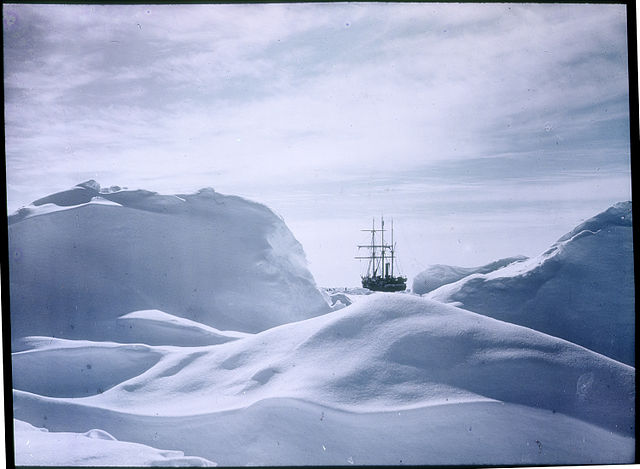A Level Five Culture in Antarctica? Yes, as unusual as it sounds.
In 1914, Sir Ernest Shackleton, British explorer, embarked on an expedition to traverse Antarctica. His recruiting ad in The London Times read:
“Men wanted: For hazardous journey. Small wages, bitter cold, long months of complete darkness, constant danger, safe return doubtful. Honour and recognition in case of success.”
(As quoted in Multipliers: How the Best Leaders Make Everyone Smarter, by Liz Wiseman with Greg McKeown, New York: Harper Collins, 2010, p. 22.)
Hundreds applied for 28 crew positions.
Sir Ernest Shackleton’s perilous mission to the South Pole in 1914 was a classic story of leadership through uncertainty, against almost overpowering odds. He developed a Level 5 culture and built a team that would endure and overcome some of the worst conditions imaginable.
Shackleton set forth on a journey to the South Pole in December 1914, reaching the Weddell Sea in mid-January. There was unusually early ice, and on January 19th, his ship Endurance became frozen in the middle of an ice floe. He realized they would be trapped until the warmer weather came (which is autumn in the southern hemisphere), so on February 24 he converted the ship to a winter station. They drifted along as part of the ice floe for months.

Vintage photograph showing glimpse, between mounds of snow, of the ship “Endurance”, from the Shackleton Expedition. [image source: Wikimedia Commons/State Library of New South Wales/CC BY-SA 3.0 AU]
When spring arrived in September, the thawing, refreezing and movement of the ice damaged the ship’s hull. Shackleton realized they would not be able to sail the ship out as he had hoped. On October 24, water began pouring into the ship.
Several days later they abandoned ship and set up equipment and provisions in camps on the ice and watched as on November 21, 1915, the Endeavor sank. They camped on the ice floe for almost 2 months, hoping it would drift towards a known source of stored supplies on Paulet Island 250 miles away. They failed numerous times to cross the vast floe and Shackleton finally decided to set up a more permanent camp on another floe hoping it would take them to Paulet. They were within 60 miles of Paulet on March 17th, 1916. They were unable to reach it and on April 9th their ice floe broke in half. Shackleton ordered the crew into 3 lifeboats to head for the nearest land. They spent 5 difficult days at sea and, exhausted, finally landed on Elephant Island, which was 346 miles away from where their ship had sunk. They had not been on land for 497 days!
Unfortunately, Elephant Island was far from shipping routes so the chance of being rescued was non-existent. Shackleton took 5 crew members with him in one of the lifeboats they had fortified to withstand an ocean trip to South Georgia, 720 nautical miles away. He took provision for 4 weeks reasoning that if they didn’t reach South Georgia by then, they would be dead.
They left on April 24, getting within sight of South Georgia on May 8. Hurricane-force winds kept them from landing until the next day. They were on the unoccupied side of the island. Shackleton took two of the men with him to cross the 32 miles over treacherous mountainous terrain for 36 hours to reach the whaling station on May 20th. He sent a boat to get the three men on the other side of the island and started to organize the rescue of the rest of his crew on Elephant Island. His first three attempts failed due to impassable sea ice. He finally got help from the Chilean navy and a British whaler to rescue the 22 men. They reached them on August 30, 1916. All of Shackleton’s men survived the harrowing expedition due to his extraordinary leadership under very trying conditions.
His expedition, and the leadership lessons it demonstrates about the power of a Level 5 culture to accomplish the extraordinary, are summarized by Nancy Koehn in her 2011 essay for The New York Times:
Shackleton’s sense of responsibility and commitment came with a great suppleness of means. To get his men home safely, he led them across ice, sea, and land with all the tools he could muster. This combination—credible commitment to a larger purpose and flexible, imaginative methods to achieve a goal—is increasingly important in our tumultuous times.
— from “Leadership Lessons From the Shackleton Expedition,” by Nancy F. Koehn, The New York Times December 24, 2011, p. 6.
There’s unmistakable clarity in the Level 5 culture. The azimuth guides the actions of every person in the organization. Leaders model the behaviors, repeat the values often and create the conditions for leaders and teams to have a strong “bias for action.” In the absence of specific guidance, people act within the intent.
 This blog is based on material from my book “We’re All In.” You can get a copy of the first chapter for free here.
This blog is based on material from my book “We’re All In.” You can get a copy of the first chapter for free here.
If you’d like a full copy of the entire book, you can get it here.
Enjoy the journey!
Did you find this blog post beneficial? If so, please share it with your audience using one of the choices below. It’ll just take a second, but could improve someone’s work habits for a long time to come.





